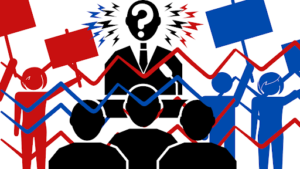Choice, competition and accountability are all synonymous with the United States education system. Since the No Child Left Behind Act passed in 2001, the United States has narrowed curriculum and teacher autonomy through rigorous standardized testing. Most of us, being raised in the NCLB era, were subjects of this massive education reform built on business principals.
When compared to other countries using an international exam known as PISA, the Program for International Student Assessment, the U.S. ranks 14th in reading and 25th in math. Our math score is considered significantly lower than the OECD, the Organization of Economic Cooperation and Development, average—basically the international average. What does this say about our schools? What does this say about our teachers? And even more importantly, what does this say about our society?
Let’s look at one of the world’s best-performing education systems to see what path it is taking. Finland took the world by surprise in 2000 when they outperformed most of the world on the PISA. Since then, they have continued to be one of the top education systems in the world, demonstrated by scoring above the OECD average in reading, math and science. What makes the Finnish school system so exceptional?
In his book “Finnish Lessons,” Pasi Sahlberg explains what the world views as an exceptional school system.
“A typical feature of education in Finland is the encouragement of teachers and students to try new ideas and methods, to learn from innovations and to cultivate creativity in schools,” Sahlberg said. He later writes, “Finland has remained immune to market-based education reforms. Instead, education sector development has been built upon values grounded in equity and equitable distribution of resources rather than on competition and choice.”
Moreover, Finnish teachers are held in high regards and viewed as esteemed professionals, along with doctors and lawyers. With the requirement of a three-year master’s degree in order to teach at any level, Finnish teachers are well versed in best instructional practices (many which were developed in U.S. universities) and the content they teach, making them highly effective teachers.
So what can the United States learn from Finland? First off, it should be noted that the Finnish culture is built upon respect for education and value for educators. This is enacted through daily life and strong support of business leaders for the Finnish education model. Due to this, the U.S. cannot simply adopt the Finnish model and make it successful. We must examine our culture and see what we can do within our context.
I believe what the U.S. can learn from Finland is that professional autonomy for teachers is essential for the development of a high-performing education system. Competition, choice and accountability create unnecessary stresses, demeaning the role of teachers as professionals and prohibiting educators to use their professional judgment in the classroom. By enabling well-trained teachers to use their knowledge of teaching and learning to meet the needs of students through designing curriculum at the local level, America can turn around.
All in all, the United States needs to look around and observe what the rest of the world is doing. If we continue on our selfish path of doing things the “American Way,” then our country is destined to face serious economic and social turmoil that will bring our nation to a halt.
Cody Summerville is a senior at Oklahoma Christian University













Be First to Comment